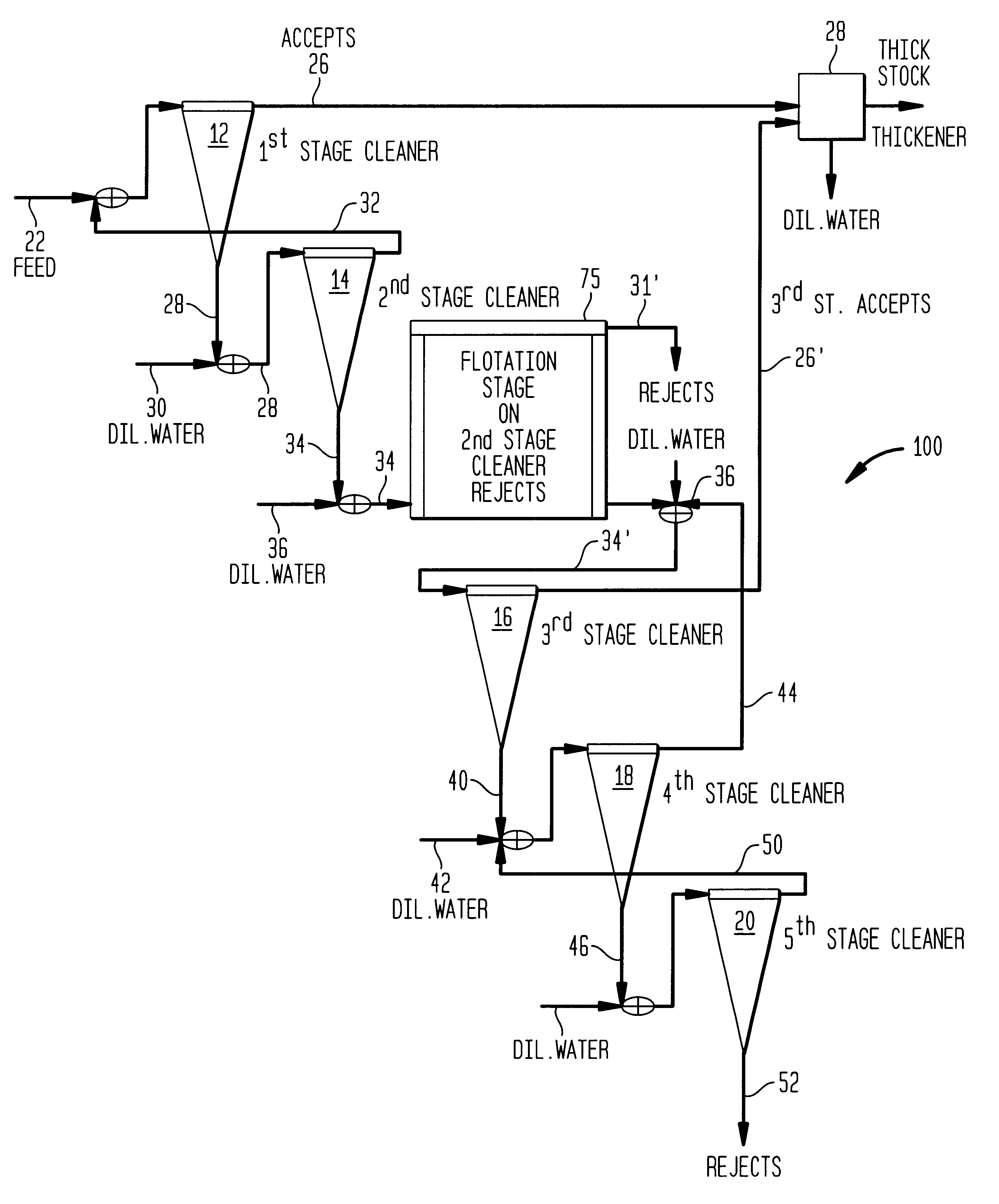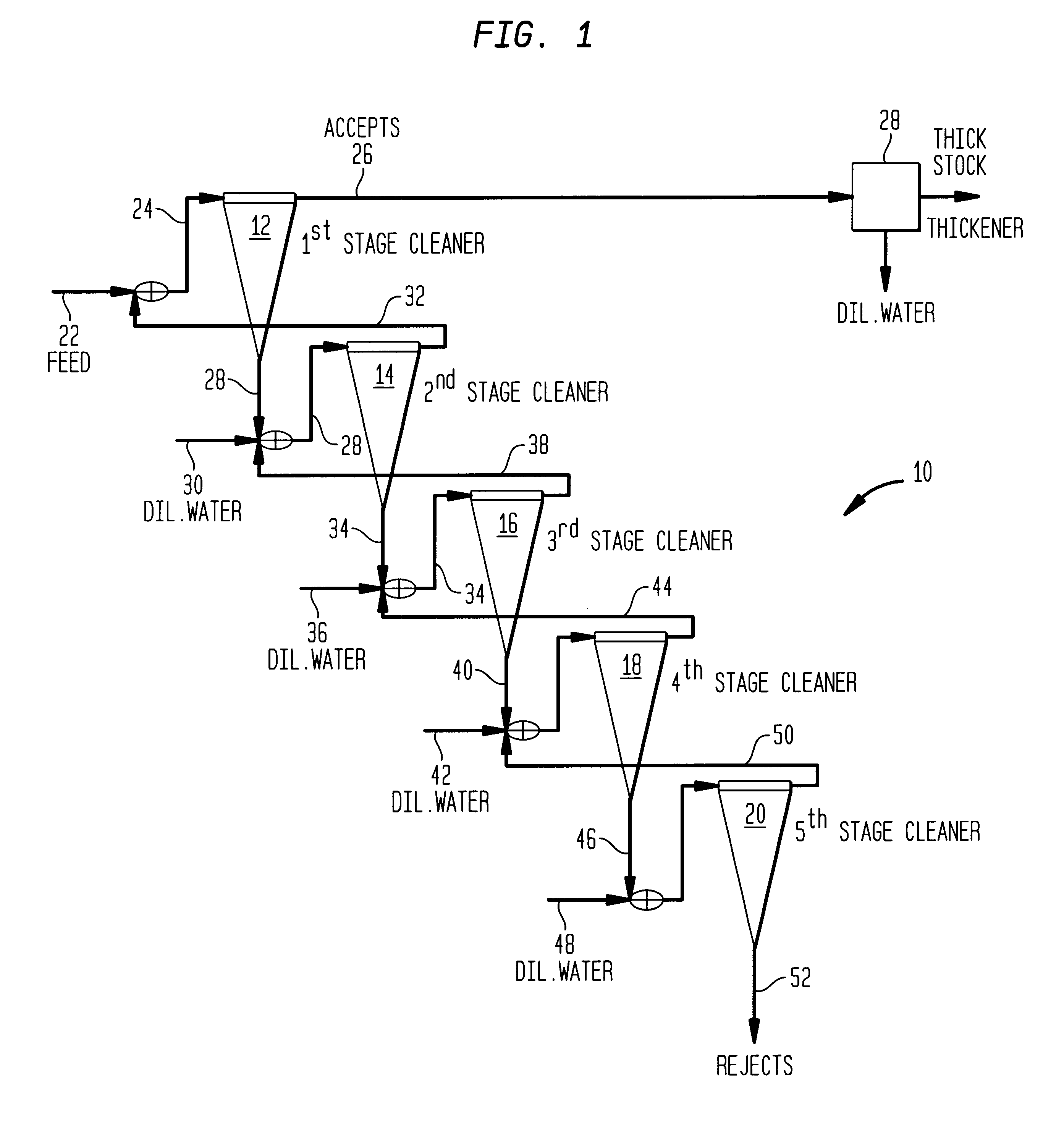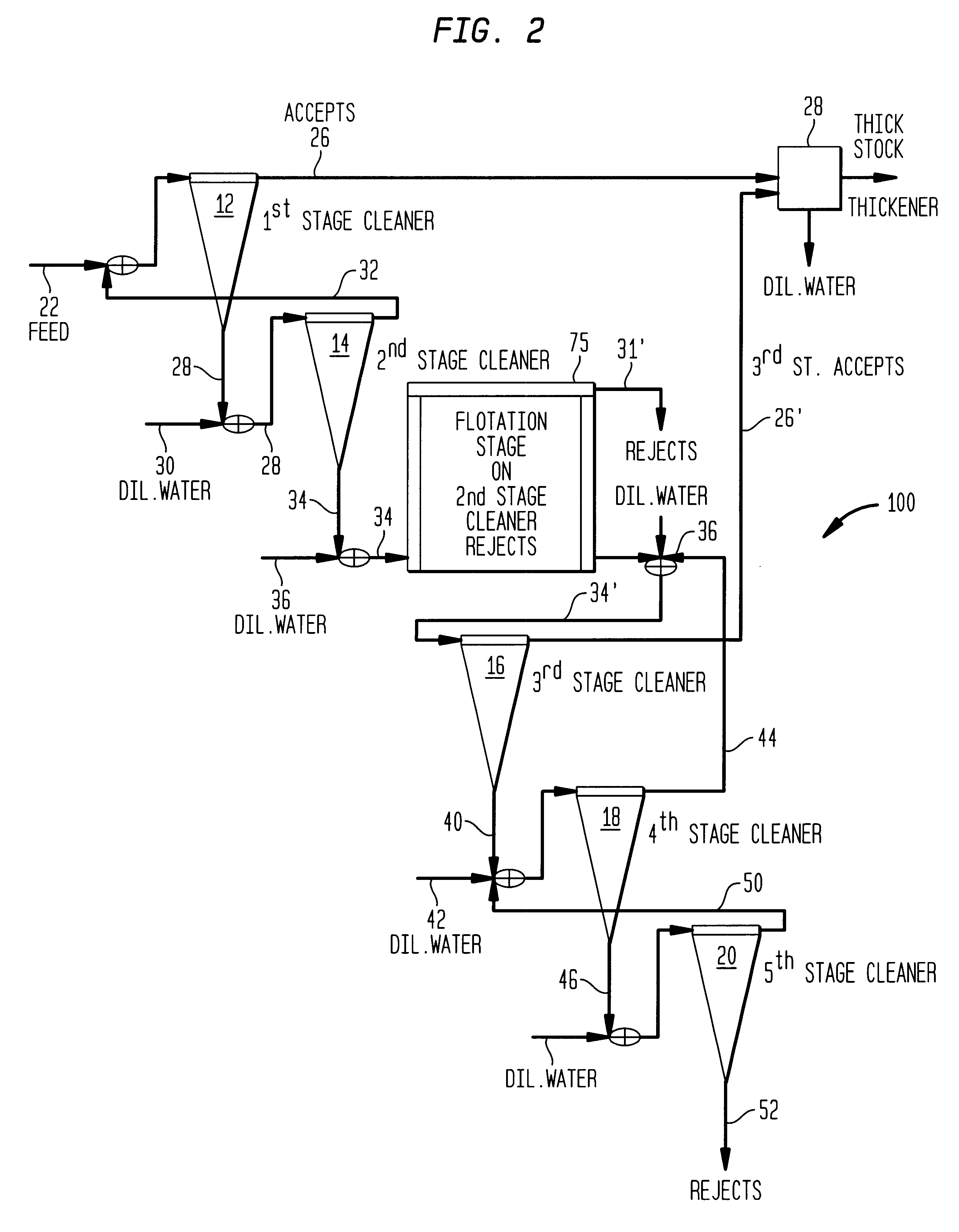Hybrid multistage forward cleaner system with flotation cell
a cleaner system and multi-stage technology, applied in reversed direction vortex, manufacturing tools, vortex flow apparatus, etc., can solve the problem of large amount of ink ending up in the pressate, and achieve the effect of increasing the overall efficiency of the system
- Summary
- Abstract
- Description
- Claims
- Application Information
AI Technical Summary
Benefits of technology
Problems solved by technology
Method used
Image
Examples
Embodiment Construction
Pilot plant trials showed that flotation cells such as the Comer Cybercel.RTM. can successfully deink secondary centrifugal cleaner rejects, with better results obtained if the consistency is kept close to 0.6%. Consistency refers to weight percent fiber or associated solids such as ash unless the context indicates otherwise. Results on 42% office waste (Grade A) and 100% office waste (Grade B) are shown in Table 1.
A simulation model was used to calculate the impact of a Comer Cybercel.RTM. flotation cell to deink forward cleaner rejects on solids loss, ash removal and on removal efficiency of mid-dirt (>150 microns) from a 1.sup.st washer to the deinked pulp (while running grade B at 336 tpd at the 1.sup.st washer):
The following indicators were used to evaluate the performance of the pilot plant:
feed consistency.
brightness gain of handsheets from accepts compared to feed.
Dirt removal efficiency of small dirt (150 microns) and large dirt (>200 microns).
Ash removal efficiency.
The res...
PUM
| Property | Measurement | Unit |
|---|---|---|
| diameter | aaaaa | aaaaa |
| hydrophobic | aaaaa | aaaaa |
| pressure sensitive | aaaaa | aaaaa |
Abstract
Description
Claims
Application Information
 Login to View More
Login to View More - R&D
- Intellectual Property
- Life Sciences
- Materials
- Tech Scout
- Unparalleled Data Quality
- Higher Quality Content
- 60% Fewer Hallucinations
Browse by: Latest US Patents, China's latest patents, Technical Efficacy Thesaurus, Application Domain, Technology Topic, Popular Technical Reports.
© 2025 PatSnap. All rights reserved.Legal|Privacy policy|Modern Slavery Act Transparency Statement|Sitemap|About US| Contact US: help@patsnap.com



